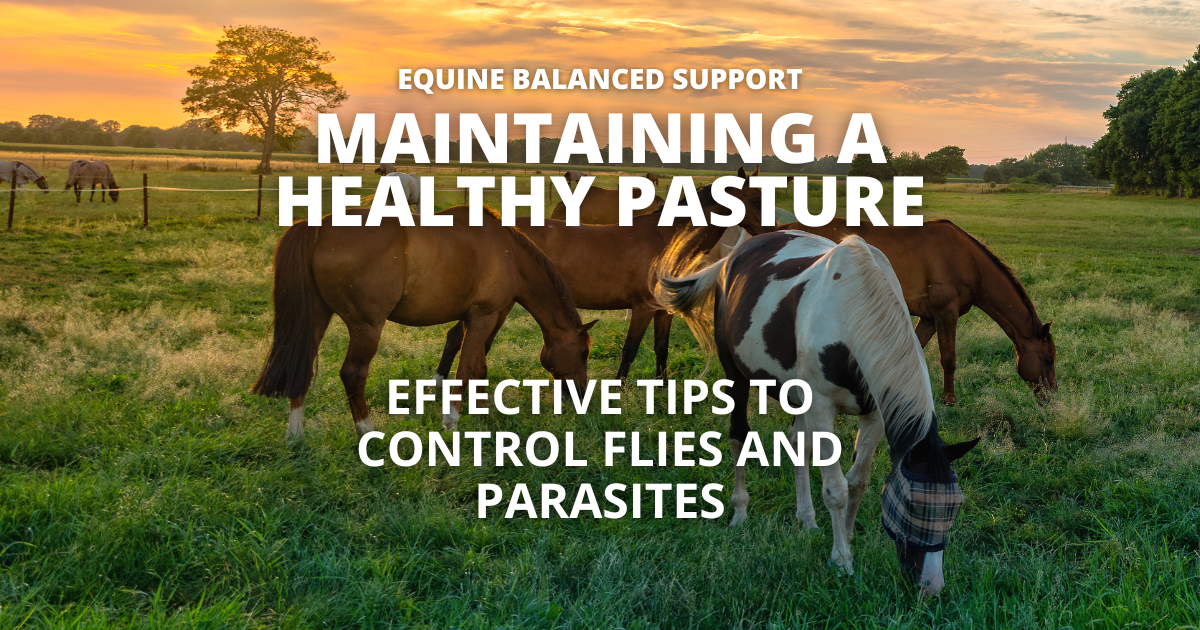10 Practical Pasture Maintenance Practices for Horse Farms

Top 10 Effective Pasture Maintenance Practices for Horse Farms to Control Flies and Parasites
Are you overwhelmed by the task of managing your paddocks? There are many reasons why careful maintenance of pastures is essential: safety, visual appeal, and perhaps the most critical, parasite control. Internal parasites and biting flies both impact your horses' health. Read on for ten practical pasture maintenance practices for horse farms to help manage flies and parasites:
1. Regular Manure Removal
Frequently remove manure from pastures, stalls, and paddocks to reduce breeding sites for flies and parasites. Implementing a composting pile, a steady spreading routine, or a regular schedule for manure removal from the property is also necessary to manage the number of flies.
2. Provide Adequate Shelter and Shade
Ensure enough shelter and shaded areas to encourage horses to use specific spots, making managing manure easier to reduce fly breeding sites.
3. Drag and Harrow Pastures
After cleaning the dirtiest sections, use a drag or harrow to break up any remaining manure piles and spread them evenly across the pasture; this exposes parasite eggs to sunlight, helping to kill them.
4. Rotate Grazing Areas
Implementing rotational grazing not only prevents overgrazing and breaks the life cycle of parasites but also significantly improves the health and well-being of your horses. Routinely moving horses to fresh pasture and resting a paddock for four to six weeks reduces parasite activity and ensures healthier horses.
5. Regularly Mow and Maintain Pasture Grass
Keep pasture grass at an optimal length (4-6 inches) to promote healthy growth and discourage parasites.
6. Implement Fly Control Systems
To reduce the adult fly population, use fly traps, fly predators (beneficial insects that feed on fly larvae), and fly sprays. Natural and chemical fly spray options are available.
7. Maintain Proper Drainage
Ensure pastures have good drainage to prevent standing water, which can become breeding grounds for flies and mosquitoes. This practice will also reduce the risk of mud scratches and other skin irritations.
8. Utilize Biological Controls
Introduce natural predators, such as chickens or guinea fowl, which feed on flies and parasites. As they eat, the birds spread the manure, making it a less effective breeding environment for the flies. Guinea fowl are well known to reduce the number of ticks in their roaming area, decreasing the risk of tick-borne illness.
9. Insect Growth Regulators
Consider using insect growth regulators (IGRs) to prevent fly larvae from developing in manure. These are available as feed-through fly control products or can be purchased and spread on manure piles. Diatomaceous earth is a natural product that breaks the life cycle of flies. It can be used as a feed-through product or sprinkled on manure.
10. Minimize Standing Water
Stone dust or mud control mats in high-traffic areas, such as around water troughs and at gaits, will reduce the opportunity for mosquitos and other pest flies to reproduce.
Implement These Practices for a Healthier Pasture
Choosing what works best for you and consistently implementing the program will ensure a healthier, more comfortable environment for the horses and humans.





Leave a comment